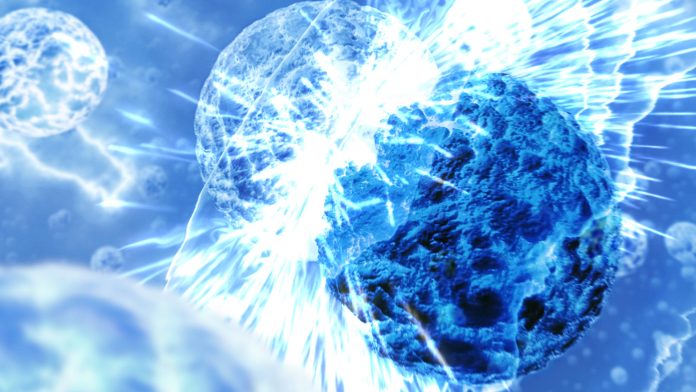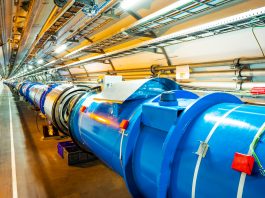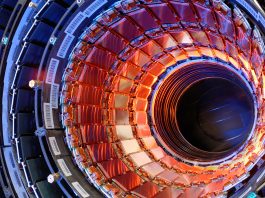Physicists from the ATLAS Collaboration at CERN have discovered evidence of the Higgs boson decaying to a low-mass dilepton system and a photon.
Known as Dalitz decay, this is one of the rarest Higgs boson decays yet seen at the Large Hadron Collider (LHC). The Higgs boson can decay to a lepton pair and a photon in three ways: the leptons can be produced via an intermediate Z boson or a virtual photon (γ*), or it can decay to two leptons with one lepton radiating a final-state photon.
For their new analysis, the ATLAS physicists targeted the decay mediated by the virtual photon. In contrast to the familiar stable, massless photon, the γ* is a virtual particle that typically has a very small (but non-zero) mass and decays instantly to two leptons. The researchers searched the full LHC Run 2 data set for collision events with a photon and two leptons whose combined mass was less than 30 GeV.
In this region, decays with virtual photons should dominate over other processes that yield the same final state. A spokesperson for the ATLAS Collaboration explained: “A peculiar feature of this decay channel is that the majority of dilepton pairs have a very small invariant mass and a comparably high transverse momentum. This means that they travel through the detector with nearly identical trajectories, only separated by a small angle. Differentiating between two very collimated muons is no problem for the ATLAS inner detector and muon spectrometer tracking systems. But for electrons, which are reconstructed in the electromagnetic calorimeter, two close-by electrons can deposit their energy within a few centimetres of one another.
“This presents us with a challenge, since the typical energy deposited in the calorimeter by a single electron is contained inside a radius of about 10cm. In this case, the signals from the two electrons will often overlap with one another, creating a unique experimental signature. Picking out these electron pairs required a specialised electron identification technique, careful energy calibration, and even a dedicated trigger to capture this special topology during the fast online event selection.”
To enhance the sensitivity of their analysis, they categorised the events into three kinematic regions designed to improve the signal-to-background ratio and enhance certain Higgs boson production modes.
They measured a Higgs boson signal rate in this decay channel that is 1.5 ± 0.5 times the expectation from the Standard Model. Observing the Higgs boson decay to a photon and a lepton pair will make it possible for physicists to study charge parity (CP) symmetry.









